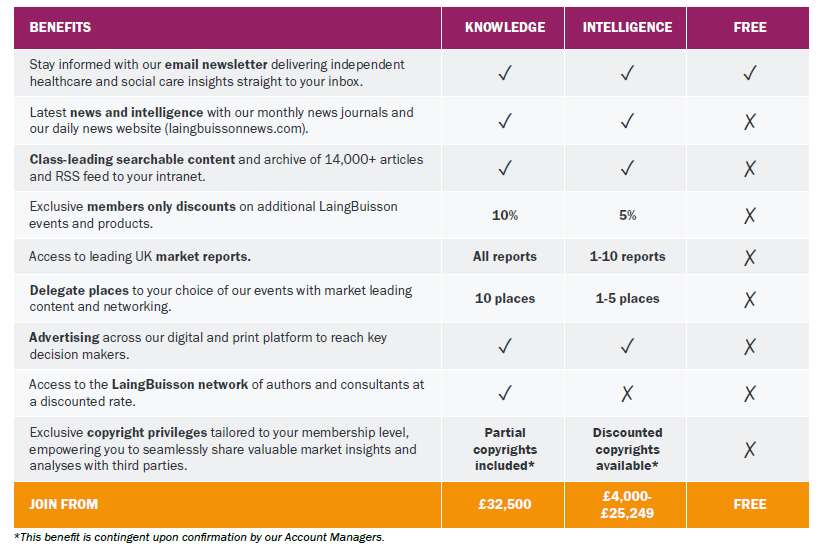Retirement housing market rebounds following lockdowns
LaingBuisson has published the second edition of its Retirement Housing UK Market Report.
This is the first edition published following the Covid pandemic and deals with the issues that are important in this market which, anecdotally, has rebounded well following difficulties during the lockdowns.
The report shows that retirement housing has the potential to offer investors secure long-term yields. While the barriers to entry of time, capital and specialist knowledge remain, there are several avenues of expansion as individuals (the main payors in this market) and commissioners of care look to alternative models for those with less acute needs. There are opportunities both at the more exclusive and mass market ends of the market. Moreover, with retailers leaving the high street, there is potential for developments in town centre locations. Private sector rental is growing strongly, albeit from a low base.
The market, nevertheless, faces several challenges. One is that many people are reluctant to return to renting having paid off a mortgage but the tenures for those wishing to buy remain flawed. Organisations as diverse as trade body, ARCO, and developer, McCarthy Stone are currently working on proposals for new models.
Another consideration is the rise of the ESG (environment, social and governance) agenda and the need to meet net zero. This will require significant investment. Much of the existing stock dates from the 1960s-1980s and is not fit for purpose unless updated to modern standards. However, the ESG credentials of the sector are strong and these have helped to attract good debt packages.
Retirement housing is a sector that continues to suffer an image problem with its potential market. Many dislike the association of the word ‘retirement’ and carry memories of sheltered housing and care homes from the 1970s. Many who visit modern developments come away with a changed impression but the question for the market is whether enough people will be persuaded to consider age-specific housing with the benefits of care and support for the market ever to reach its potential.
Report author, Steve Secker said:
“The retirement housing sector needs to face up to what needs to change for the market to reach its potential. With factors such as the stigma attached to ‘going into care’ and the emotional ties to family homes running against it, the sector must ensure what it has to offer is packaged in a way that is attractive and makes sense to people. The people retirement housing providers are seeking to engage have great diversity of experience, attitude, health and wealth and this needs to be reflected in more choice, not less. People need to be persuaded of the advantages of having access to care and services when they need them, even if they are not an immediate requirement when someone makes that ‘last time move’.
“Imagine a country where diversity of choice and inspiring housing encourages people to choose to move early in retirement to purpose-built, technology-enabled accommodation, and in so doing freeing up under-occupied family housing. This in turn will improve their independence and provide care and other services when needed. Occupiers are less likely to need NHS services and can return sooner if they do, saving money and freeing up beds, and their social care needs will be met by staff they already know and trust. They will lead active and fulfilling lives in a community and will maybe still be close to where they lived most of their lives before the move.”







